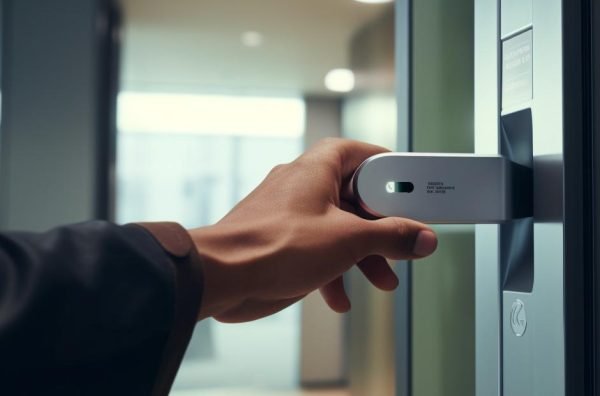In an age characterized by digital advancement and uninterrupted connectivity, the Bring Your Own Device (BYOD) trend has surfaced as a pivotal force in the workplace. Organizations are confronted with unparalleled prospects and distinctive challenges with employees utilizing their personal smartphones, tablets, and laptops for business activities. With the distinction between professional and personal technology becoming less defined, the necessity for a thorough BYOD policy becomes increasingly critical.
Crafting an effective Bring Your Own Device (BYOD) policy entails more than just device management; it requires delicately balancing the promotion of a flexible, modern work environment with the protection of sensitive corporate data. Interact with IT Consulting Boston experts to protect your sensitive company data.
In this article, we will explore the steps to create an effective bring your own device plan for your business.
Table of Contents
7 Steps to Create an Effective BYOD Policy in Your Business
1. Establish the Scope of the Policy
Establishing the scope of a Bring Your Own Device policy is a crucial step in creating an effective policy for your business. This involves determining which devices will be allowed under the policy, such as smartphones, tablets, and laptops, and specifying any restrictions or limitations on the types of devices that can be used.
Furthermore, it is essential to define the purpose and objectives of the policy to ensure that all employees understand its intended use and adhere to its guidelines. By clearly establishing the scope of your BYOD company policy, you can create a framework that promotes productivity and security while also accommodating the needs and preferences of your employees.
2. Defining Permissible Devices and Platforms
When creating a Bring Your Own Device (BYOD) policy for your business, it is essential to clearly define the permissible devices and platforms that employees can use. It helps to ensure consistency and security within the workplace. Start by identifying which devices, such as smartphones, tablets, or laptops, will be allowed for use in the workplace.
Then, specify which operating systems or platforms are compatible with your organization’s network and software. It is also crucial to outline any restrictions or limitations on device usage, such as prohibiting jailbroken devices or requiring certain security measures to be in place. You can establish guidelines that promote productivity and protect sensitive company information by clearly defining permissible devices and platforms in your Bring Your Own Device policy.
3. Conducting a Risk Assessment
Conducting a risk assessment is essential in effective BYOD management for your business. A risk assessment helps identify potential security threats and vulnerabilities that may arise from employees using their own devices for work purposes.
This assessment involves evaluating the types of data that will be accessed on personal devices, assessing the security measures currently in place, and determining any potential risks associated with device loss or theft. By conducting a thorough risk assessment, businesses can develop policies and procedures that mitigate risks and ensure the security of sensitive company information. To mitigate risks and issues, visit Cybersecurity Boston experts.
4. Separate Business and Personal Data
When creating a Bring Your Own Device (BYOD) policy for your business, it is crucial to separate business and personal data. It helps ensure the security and confidentiality of sensitive company information while respecting the privacy of employees’ data. One way to achieve this separation is by implementing mobile device management (MDM) software, which allows you to remotely manage and secure business-related apps and data on employees’ devices.
In addition, educating employees about the importance of keeping personal and business data separate and providing clear guidelines on how to do so can help reinforce this BYOD security policy. By effectively separating business and personal data, you can mitigate potential risks and maintain a secure environment for your company’s information and your employees’ privacy.
5. Implementing Mobile Device Management (MDM) Solutions
Implementing Mobile Device Management (MDM) solutions is crucial in creating an effective BYOD security policy in your business. MDM solutions allow you to manage and monitor employee devices securely, protecting sensitive company data. With MDM, you can enforce security measures such as password requirements, remote data wiping, and encryption.
It also helps you control which apps are allowed on employee devices and set up restrictions to prevent unauthorized access. By implementing MDM solutions, you can maintain the security of your business data while still allowing employees to use their own devices for work purposes.
6. Providing Employee Training and Awareness
Enhancing employee training and awareness is essential for developing an effective security policy for byod within your business. It is imperative to educate employees about the risks associated with utilizing personal devices for work purposes, including the potential for data breaches or malware infection.
Employees can better understand their responsibilities and take appropriate measures to safeguard company information by providing comprehensive training on best practices for device security and data protection. Moreover, raising awareness through regular communication channels, such as email updates or team meetings, helps to reinforce the importance of adhering to the BYOD company policy and encourages a culture of information security within the organization.
7. Regularly Reviewing and Updating the BYOD Policy
Regularly reviewing and updating your BYOD (Bring Your Own Device) policy is essential to ensure its effectiveness in your business. Technology is constantly evolving, and new threats and challenges may arise that your policy needs to address. By regularly reviewing and updating the policy, you can stay ahead of any potential risks and ensure that your employees are following best practices when it comes to using their devices for work purposes.
This can include updating security measures, clarifying acceptable use guidelines, and providing training on any new tools or technologies that may be introduced. By taking a proactive approach to reviewing and updating your Bring Your Own Device Policies, you can maintain a secure and productive work environment for your employees.
In Conclusion
Developing and implementing an effective BYOD policy is crucial for modern businesses seeking to harness the benefits of employee-owned devices while mitigating potential risks. Organizations can strike a balance between flexibility and control by prioritizing security measures, fostering clear communication, and staying abreast of technological advancements. Bring Your Own Device policies safeguards sensitive data and promotes a collaborative and efficient work environment. As technology evolves, regularly revisiting and updating the BYOD policy will ensure its relevance and effectiveness in an ever-changing landscape.





